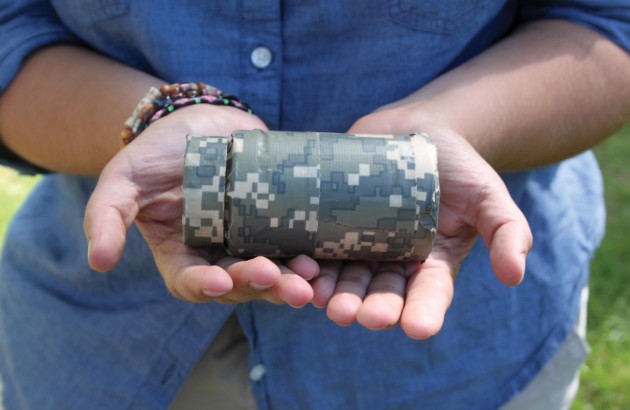
For students seeking outdoor fun with a bit of problem solving, Geocaching may be something to pursue.
Geocaching, as defined on geocaching.com, is a "free real-world outdoor treasure hunt" involving GPS-enabled devices. By using the GPS coordinates, players try to locate small containers, known as geocaches, which have been carefully hidden by others. Since geocaching.com introduced the outdoor sport to the public in 2000, over 1.8 million caches have been hidden all over the world.
Caches themselves can be just about any object or container that can be hidden or disguised and they range in size from, "a pencil casing to a five-gallon bucket," according to junior Mackenzie Cremeans.
Cremeans started geocaching in high school with her friends and picked the hobby back up this past summer when she was doing research in DeKalb, Ill.
"That was how I got to know the area," she said.
Most traditional caches are relatively small containers that hold a token or object of some sort. Along with signing and dating a small log book of finders, the expectation is that when someone finds a cache, he or she is supposed to take the object inside and replace it with another.
"I usually replace the items with these wooden coins that my hometown makes," said Cremeans. "Some [caches] even have tracker bugs inside them so that people can see where their items end up."
Along with the traditional caches, there are also many themed ones. Mystery caches, like the one at Greencastle's Heritage Wall on the west side of Vine St., have clues hidden on the wall that provide geocachers with the coordinates of the cache's location. Cremeans said that this particular cache is a great way for students to learn more about Greencastle since its clues lie in answers to questions about the town.
Another example of a themed cache in Greencastle is the Fern Cliff Nature Preserve, an Earth cache located just a few miles outside of town.
"There are a bunch of big sandstone cliffs there that they used to mine the sand from to make Coca-Cola bottles," Cremeans said.
Cremean's favorite journey in search of a cache took her, "on a hike through nature, past a waterfall and finally led to an overlook at the edge of the cliff." The cache was an arm's reach down the side of the cliff.
Since she has found a number of caches, Cremeans said she considers two different caches to be her favorites.
"One was a magnetic water spigot stuck to the side of a building. I had walked around the building several times before I accidently bumped into it, saw that it slid, and realized that it was the cache," Cremeans said. "My other favorite cache was a plastic Easter egg in an actual bird's nest."
Brian Stahly, who attended DePauw from 1987-1988, also has a few favorite geocaching memories. Stahly said his favorite place geocaching has taken him is to the Cave Hill National Cemetery in Louisville, Ky.
"It is one of the most beautiful cemeteries that I've ever been in," he said.
Stahly, a current resident of Carmel, Ind., has been geocaching in just about every state in the midwest and southeast United States. He said one of his other favorite geocaches led him to a cache hidden on July 1, 2001.
"It was on the banks of the Ohio River in southern Indiana. There were 70-80 foot tall limestone cliffs, and I had to climb to the top of one of the cliffs to find it."
Stahly believes that geocaching is a great activity for DePauw students to get involved in.
"They can register for a free membership; it doesn't cost anything."
For senior Kyle Uhlmann, his interest in geocaching resulted from a practical archeological survey project in one of his classes in fall 2010.
"I had enough fun to keep going after the project ended and have been doing it ever since," he said in an email interview. Since Uhlmann's first caching experience in the fall of 2010, he has cached in eight different states, as well as Spain and Portugal.
Despite his variety of caching travels and experiences, Uhlmann's favorite cache is one just right outside of Madison, Ind.
"It's a play on Freddy Krueger," he said. "The cache can only be found at night because you have to use a flashlight to follow little reflective dots posted on trees throughout the woods to find the cache."
Some caches are more challenging to locate than others, and there are over 130 geocaches within a ten-mile radius of DePauw's campus waiting to be found.
"Greencastle has a pretty active caching community, and new caches are always popping up," Uhlmann said.
- Margaret Distler contributed to this story.


